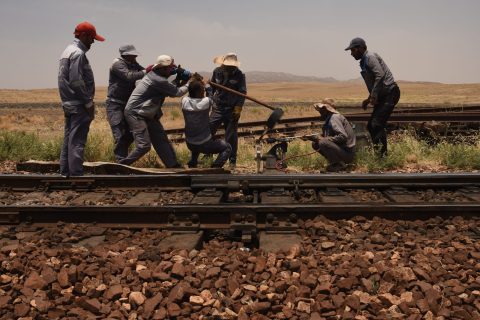A bypass route to Duisburg: is this the new normal?

All roads lead to Duisburg, is what these logistics companies must have thought. The Dutch logistics firm Nunner and Chinese counterpart Tiedada have established a bypass route via Turkey for cargo from China to the German hub, in cooperation with Duisburg itself.
It takes some logistics creativity and know-how, but there are many ways to cross continents with containerised cargo. “Against the background of the shocking events and the human tragedy currently taking place in Ukraine, we are trying to keep the supply Chain between Asia and Europe intact so that our customers in Europe and the rest of the world get their necessary supplies delivered”, Nunner mentioned.
Bypass route
The route established largely follows the Middle corridor: from China to Kazakhstan, over the Caspian Sea to Azerbaijan and then through Georgia to Izmit and eventually Istanbul in Turkey. In Istanbul, the cargo is reloaded on a vessel again, this time to reach Trieste. From this Adriatic port city, the cargo finds its way to Duisburg.
“From Duisburg, our joint Duisburg – Amsterdam train takes over for containers (FCL ánd LCL) with final destination UK and other overseas destinations”, adds Nunner.
Only viable option
The route via Turkey has gotten a lot of attention since the Russian invasion of Ukraine. More and more companies are choosing to avoid transit through Russia, either because they consider the route insecure or because they disapprove of the decisions taken by the Russian government.
However, the rail freight corridor between China and Europe more often than not includes transit through Russian territory. The Middle Corridor now seems to be the only viable alternative for those who do not want to deal with the Russian railways. The Southern Corridor, which runs through Iran and Turkey, is a third option, but as Iran is subject to US sanctions as well, there isn’t much interest in this route at the moment.
Middle Corridor
The Middle Corridor has been there for many years and has seen some growth, but is much less competitive compared to the main route (Belarus – Russia – Kazakhstan). This is because there are seas in between (Caspian Sea, Black Sea) and the rates are still relatively high.
From Turkey, the markets in Europe that are most easily reached by train are the southern European countries. For these countries, it has been more viable to opt for the Middle Corridor. Now that the main route is not a first choice for many, the Middle Corridor will also start to appeal to western markets, with different transport solutions possible from Turkey onwards.
You just read one of our premium articles free of charge
Want full access? Take advantage of our exclusive offer







How long is the transportation time from the east of China to Trieste? And why is it shipped to Triest and not continuing by rail via Bulgary etc. Another option would be shipping to Constanta, then you avoid crossing the Alps.
Regards,
Bert van Lunteren
Absolutely, Bert. Constanza is a lovely town, or was in in the early 80s when we went. Is there not a train tunnel under the Bosphorus in Istambul or the Dardenelles? If there was, we would be in clover. Why didn’t somebody think of this thirty or forty odd years ago? Oh, whoops, they did, but nobody in Governments/TOCs took them seriously! Mike Westbrook, Nonsuch Consulting (RI), Surrey, England.
Absolutely, Bert, Constanza is a lovely, busy, well-connected, town, or was when we visited in the early 80s. Is there a train connection across the straight in Istambul? If there was, we would be in clover. Why wasn’t this problem foreseen 30 or 40 years ago? Oh, whoops, it was, only the respective Governments/TOCs took absolutely no notice of our comments then! Mike Westbrook, Nonsuch Consulting (RI), Surrey, England.